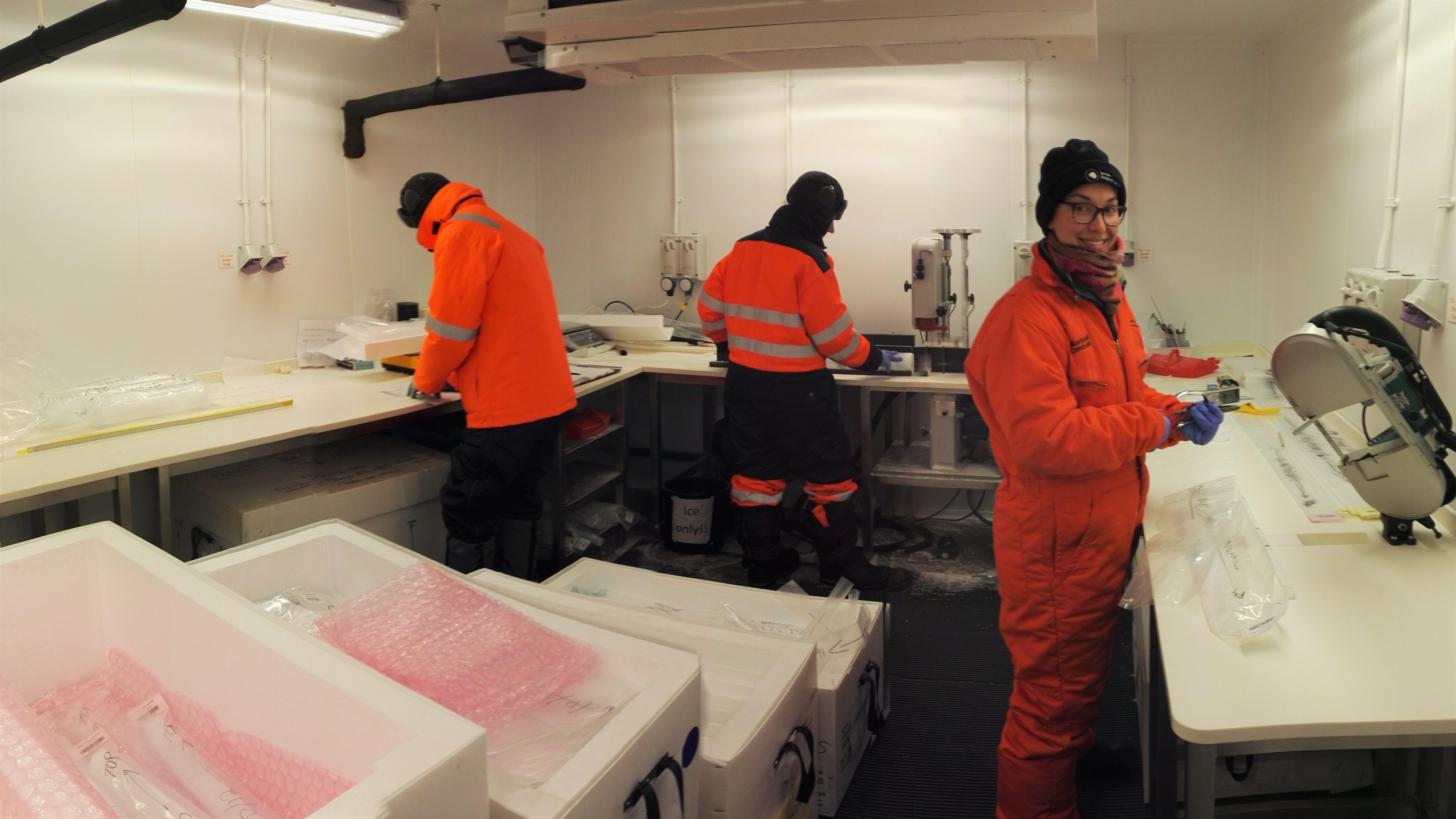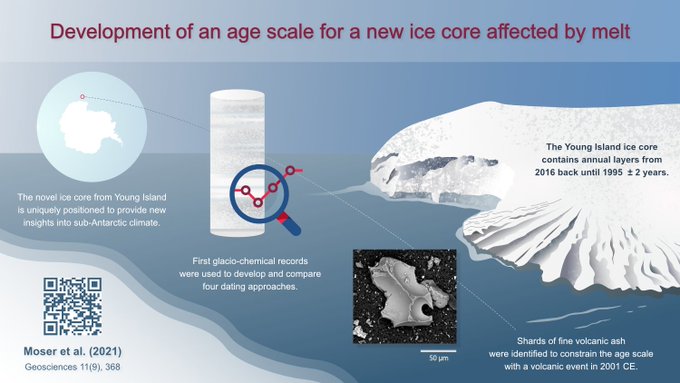
Submitted by Dr C.M. Martin-Jones on Mon, 25/10/2021 - 10:20
Dorothea Moser, PhD student at the Department of Earth Sciences and British Antarctic Survey, has led an international team of scientists in new research that addresses the impact of melting on ice cores from Antarctica.
Ice cores carry valuable information about how our climate has changed in the past; their annual layers trapping bubbles of ancient atmospheric gas and aerosols carried by the wind. The ice itself also contains varying amounts of stable water isotopes, which can be used to reconstruct the temperature at the time the snow fell.
Turn up the heat in a given year, however, and ice will melt. This can cause useful chemical information to shift down through the ice, and the climate signal it preserves to get out of sequence. For this reason, ice core scientists often work around melt layers, but Moser’s PhD is instead trying to tackle the problem by studying its prevalence and implications for climate reconstructions.
In the first paper from her PhD, Moser presents the first time sequence of chemical information from a melt-affected ice core from Young Island, northwest of the Ross Sea near Antarctica. This site is key to building a picture of Antarctica’s changing climate because it sits at the boundary of the westerly wind belt, meaning it is highly sensitive to atmospheric circulation changes.
“Surface melt events are an increasing issue affecting Antarctica, so it is even more crucial to understand what melting does to ice on different scales. While it impacts the stability of ice shelves like the Larsen B on a large scale, it can also disrupt the chemical preservation of proxies we use to reconstruct past climate on a much finer resolution,” said Moser.
Climate scientists look to long-term environmental records in order to put human-induced warming into context. “Records show that climate change today is quicker and more intense than many shifts that the Earth’s climate has experienced, and that’s what makes the current anthropogenic climate crisis much more urgent,” said Moser.
A key part of Moser’s work was dating the ice core, an important initial step in measuring when climate changes in recent decades happened, and how fast they were. But this step can be a significant challenge with melted, at least partially altered, ice cores.
Moser first studied the Young Island ice core during her Masters, “At first it was meant to be an easy task: process the core and extract some new climate information. But I saw instantly that the core was different, melted and messy! This core actually gave me the impetus to set up this PhD in search of solutions to the problem.”
Using a range of dating methods, including volcanic ash left on the snow surface by an eruption on neighboring Sturge Island in 2001, Moser revealed that the ice core contains annual layers back from 2016 to approximately 1995.
According to Moser, “This first paper is really a hook for the rest of my PhD – I aim to get better structural and chemical information from melt-affected ice cores from across the region, so that they can be used effectively for climate reconstructions.”
Moser, D.E., Jackson, S., Kjær, H.A., Markle, B., Ngoumtsa, E., Pedro, J.B., Segato, D., Spolaor, A., Tetzner, D., Vallelonga, P. and Thomas, E.R., 2021. An age scale for the first shallow (sub-) Antarctic ice core from Young Island, Northwest Ross Sea. Geosciences, 11(9), p.368.

